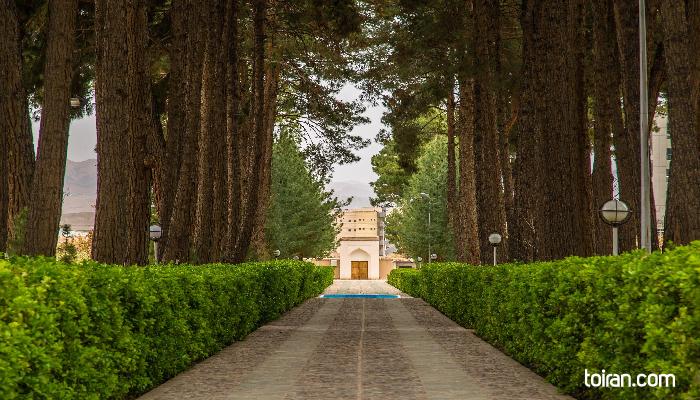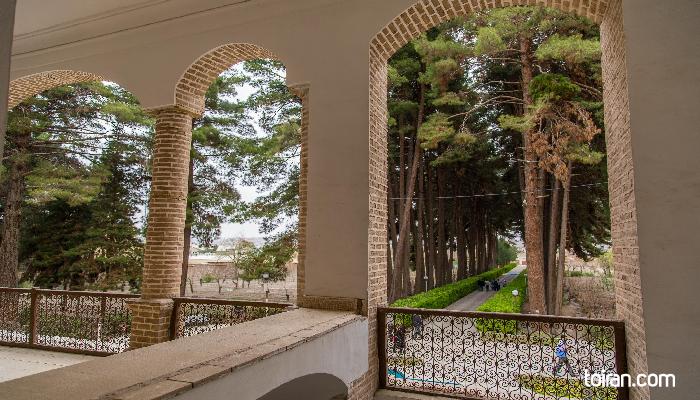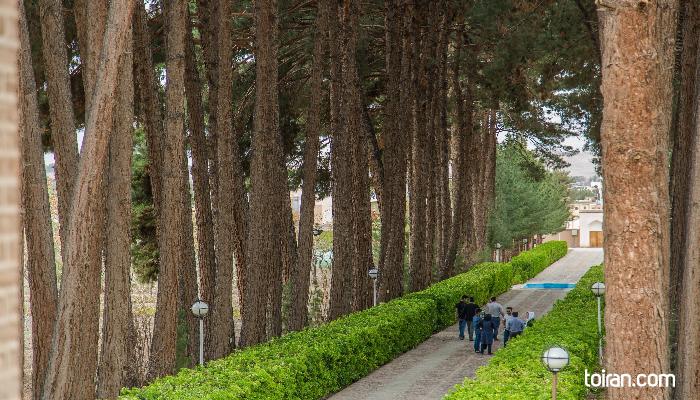The Akbarieh Mansion and Garden complex was created over several stages in the early to late Qajar era (1785-1925) and was used as the residence of the Alam family. Spanning an area of approximately 45,069 square meters, Akbarieh complex is surrounded by mountains and consists of two residential buildings and two gardens.
The oldest mansion was built by Amir Alam Khan III "Heshmat al-Molk” (?-?), one of the Qajar governors of the Khorasan region, and is located in the eastern part of the complex. This two-story building has two large hallways that connect the main building to the southern garden and stables. The Heshmat al-Molk structure has Muqarnas (ornamented vaulting) and Rasmi Bandi (interlocking patterns, arches and geometric shapes) decorations as well as a Hall of Mirrors.
The main Akbarieh structure was built by Heshmat al-Molk’s son, Amir Mohammad Ebrahim Khan, Shokat al-Molk (1880-1943) in the western part of the complex. This two-story structure boasts Monabbat (wood carving and inlaid work), lattice, and stained glass decorations as well as arabesque and geometric stucco reliefs. This building was originally used as a place to receive and entertain guests but is currently the location of the Archology and Anthropology Museums of Birjand.
Of the two gardens in the complex, the southern one is smaller than the northern one. the southern garden is surrounded by service structures, stables and the Shokat al-Molk building. A square pool takes up most of the space in the larger garden. A network of streets lined with pine trees connect the different parts of the structure.
Aside from pine trees Akbarieh has an impressive collection of decorative trees like cedar, Persian cypress, ash, Judas, and juniper trees as well as fruit trees like pistachio, pomegranate, fig, black fig, greengage, pear, apricot, mulberry and Persian peach. The gardens also have a verity of rose bushes including Damascus and eglantine as well as barberry and amaranth plants. Both gardens are irrigated by underground water canals called Qanat.
There is an entrance in the southern part of the Akbarieh complex that opens to Akbarieh village.
Pahlavi era (1925-1979) Prime Minister Amir Asadollah Alam (1919-1978)- the son of Shokat al-Molk- used Akbarieh complex as his residence during certain times of the year. Alam donated the complex to the Astan-e Qods Razavi Foundation which is the custodian of the Razavi Shrine in Mashhad. Akbarieh Mansion and Garden were registered as a National Heritage Site in 1999.
Akbarieh is considered one of the finest examples of the UNESCO-registered Persian Garden.



